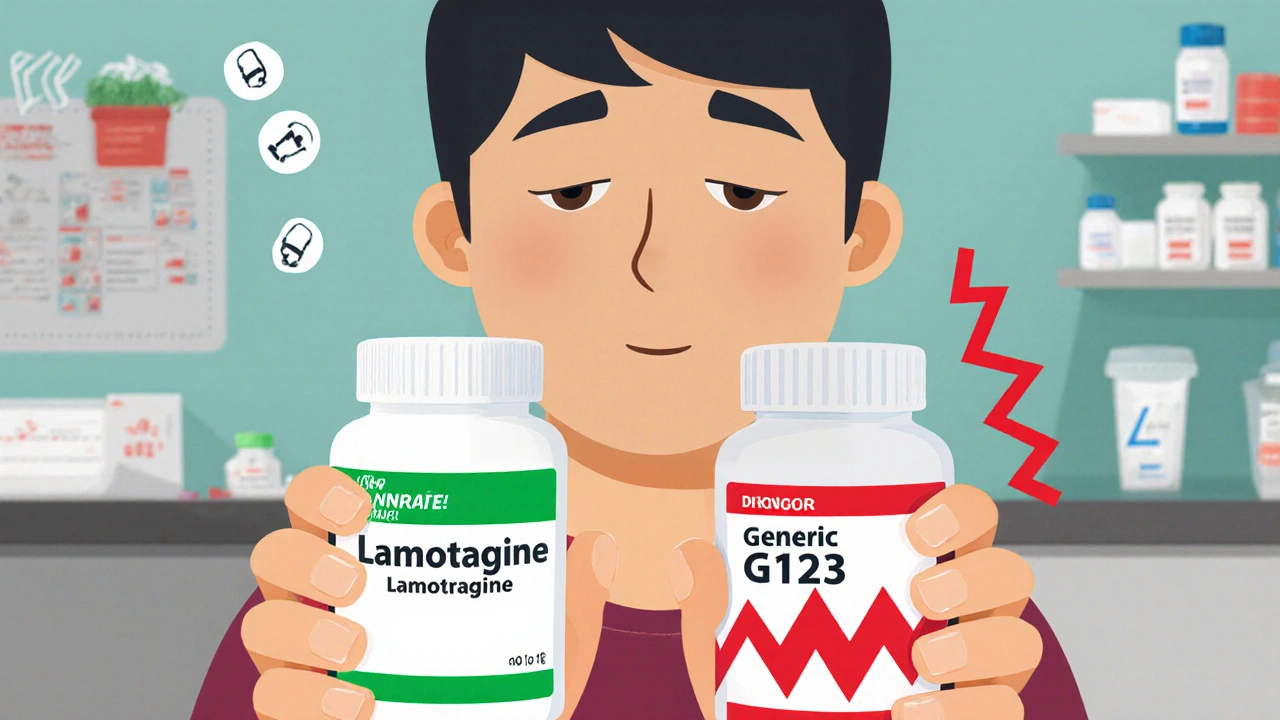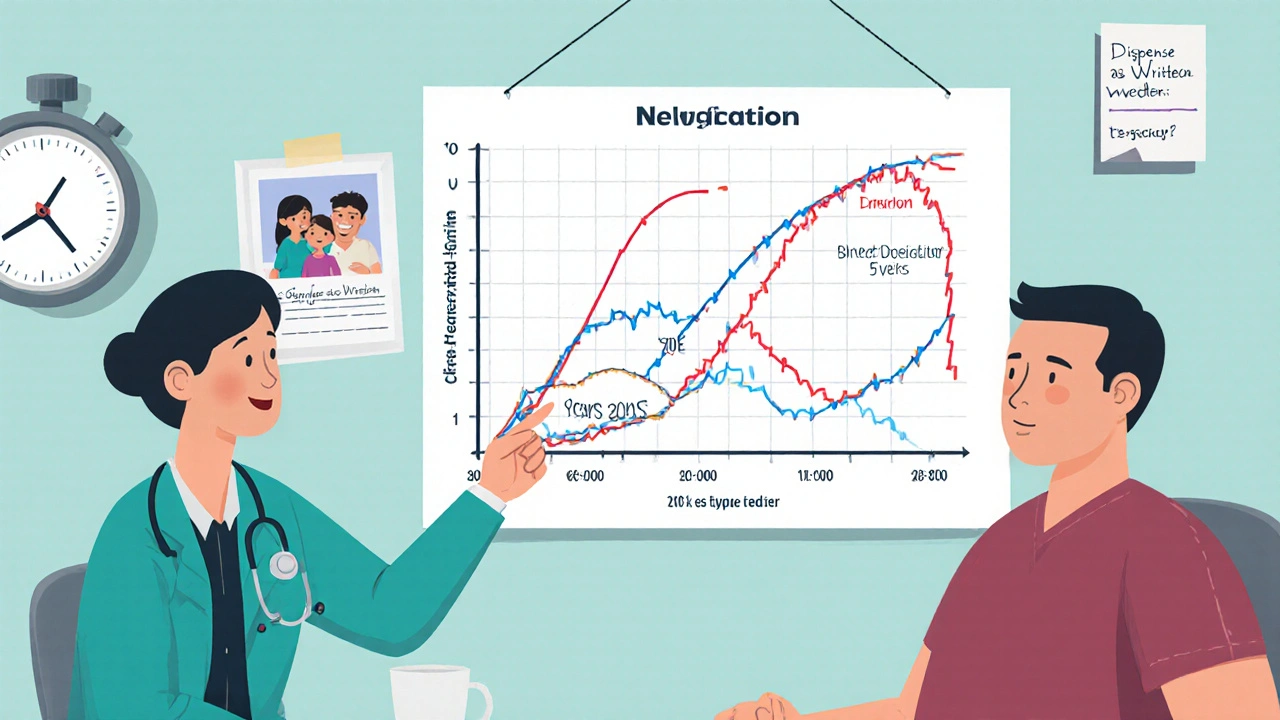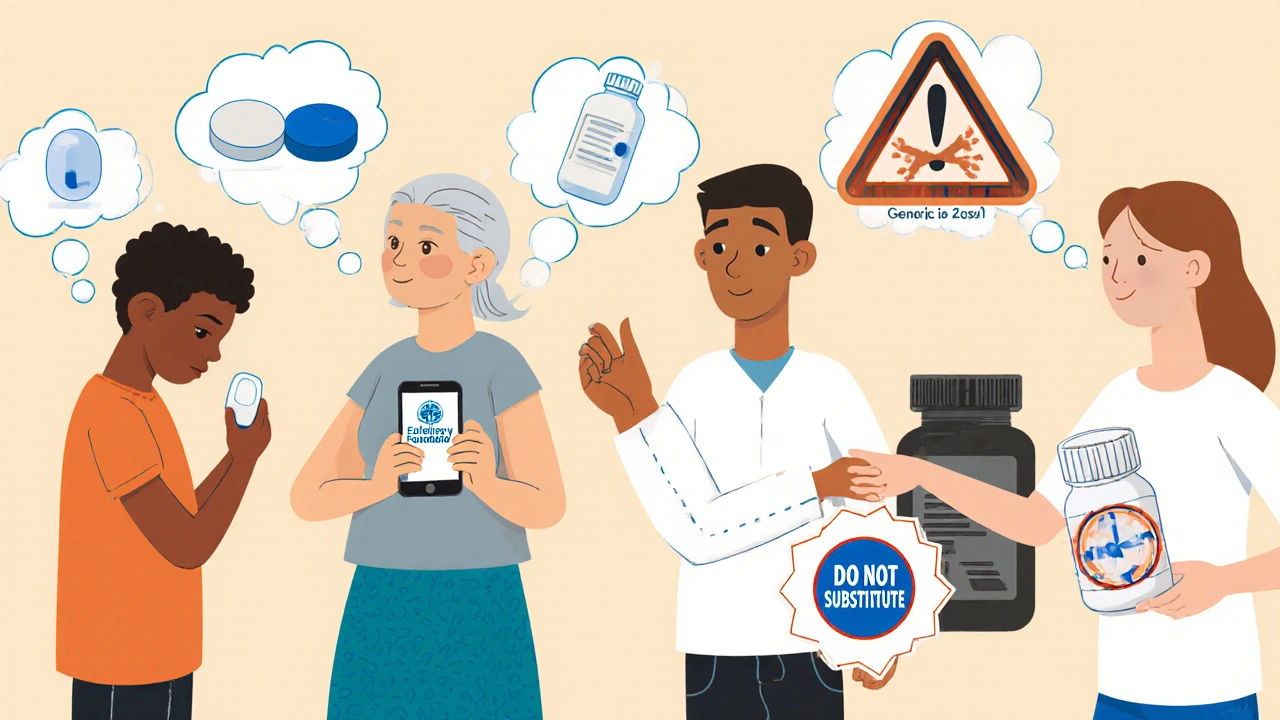Antiseizure Medications and Generic Substitution: Risks and Best Practices

When you're managing epilepsy, consistency isn't just a preference-it's a matter of safety. For millions of people taking antiseizure medications (ASMs), a simple pharmacy switch from brand-name to generic can mean the difference between staying seizure-free and facing a dangerous breakthrough seizure. Even though the FDA says generics are "bioequivalent," real-world outcomes tell a different story. Many patients, neurologists, and epilepsy advocates have seen firsthand how changing the manufacturer-even when the active ingredient is identical-can trigger seizures, anxiety, or side effects that weren't there before.
Why Antiseizure Medications Are Different
Not all drugs are created equal when it comes to generics. Most medications, like antibiotics or blood pressure pills, have a wide safety margin. If your dose is 10% higher or lower, your body handles it without issue. But antiseizure drugs like lamotrigine, carbamazepine, and valproic acid fall into a category called narrow therapeutic index (NTI) drugs. That means the gap between an effective dose and a toxic one is razor-thin. For these drugs, even a 15% fluctuation in blood concentration can cause problems. A 2008 study in Neurology found that patients switched from brand-name lamotrigine to generic versions had a 23% increase in doctor visits and an 18% rise in hospitalizations. That’s not a small uptick-it’s a clinical red flag. The reason? Generic versions must meet FDA bioequivalence standards: their absorption rate (measured by AUC and Cmax) must fall within 80-125% of the brand. But for NTI drugs, that 45% range is too wide. Two generics can both meet FDA rules and still behave differently in your body.What Happens When You Switch
Imagine you’ve been seizure-free for five years. Your pills are small, white, and marked with a "L" on one side. One day, your pharmacy hands you a new bottle: same active ingredient, but now the pill is blue, oval, and stamped with "G123." You don’t think much of it-until you have three seizures in two weeks. That’s the story shared by "SeizureFreeSince87" on the Epilepsy Foundation’s patient forum. It’s not rare. Patients report:- Breakthrough seizures after switching to a new generic version
- Increased dizziness, fatigue, or rashes-side effects that disappeared when they went back to the original brand
- Confusion and anxiety from changing pill shapes, colors, or sizes, which can actually trigger seizures in people whose seizures are stress-sensitive
- Difficulty remembering whether they took their dose because the pills look different every refill
The FDA vs. Real-World Evidence
The FDA insists that generic antiseizure drugs are safe and effective. Their position: if a drug meets bioequivalence standards, it’s interchangeable. But this ignores how real people live with epilepsy. The agency points out that many patients have seizures even while staying on the same brand. That’s true-but it misses the point. The question isn’t whether seizures happen at all. It’s whether switching formulations increases the risk. Evidence says it does. A 2018 study in Epilepsia showed that patients switched from generic back to brand-name antiseizure drugs at more than double the rate of other medications. That’s not because patients are picky. It’s because they feel unsafe. Even the UK’s Medicines and Healthcare products Regulatory Agency (MHRA) has warned that for drugs where failure could mean serious harm-like ASMs-consistency of supply matters. They don’t call it a "risk." They call it a "clinical consequence."
Who’s Most at Risk?
Not everyone who takes antiseizure meds needs to avoid generics. But some people are far more vulnerable:- People with frequent or severe seizures-even one extra seizure can mean a fall, injury, or ER visit
- Those on multiple antiseizure drugs-interactions get harder to predict when formulations change
- Children and older adults-they may not notice or report subtle changes in how they feel
- Patients with cognitive issues or memory problems-changing pill appearance increases dosing errors
- People on the ketogenic diet-some generic fillers contain hidden carbs that can throw off metabolic balance
Best Practices: How to Stay Safe
You don’t have to choose between affordability and safety. Here’s how to protect yourself:- Talk to your neurologist before any switch. Ask them to write "Dispense as written" or "Do not substitute" on your prescription. This legally prevents the pharmacy from switching without your doctor’s approval.
- Know your pill. Take a photo of your medication. Note the color, shape, imprint, and size. If it changes unexpectedly, call your pharmacy and your doctor.
- Check the manufacturer. Even within generics, different companies make different versions. If your pill changes, ask if it’s the same manufacturer. If not, request the original one.
- Track your seizures and side effects. Keep a simple log: date, medication version, seizure occurrence, mood, sleep, side effects. This helps your doctor spot patterns.
- Use the Epilepsy Foundation’s Medication Access Program. If cost is an issue, they help patients get brand-name drugs at reduced prices-no insurance needed.
What’s Changing? The Future of ASM Substitution
The FDA is now considering tighter bioequivalence standards for NTI drugs-narrowing the acceptable range from 80-125% to 90-111%. That’s a step in the right direction. But it’s still not enough for every patient. Meanwhile, the American Epilepsy Society is running a major study (NCT04987654) tracking seizure outcomes in patients who switch versus those who stay on the same formulation. Results are expected in 2026. Until then, the safest approach remains: consistency. Newer antiseizure drugs like cenobamate and fenfluramine have even more complex pharmacokinetics. They’re not yet widely available as generics, but when they are, the same risks will apply. Precision medicine in epilepsy isn’t just about choosing the right drug-it’s about keeping the same version of it.
What You Can Do Today
If you or someone you care for takes antiseizure medication:- Don’t assume generics are always safe.
- Don’t wait for a seizure to happen before asking questions.
- Don’t let cost pressure override safety.
Frequently Asked Questions
Are all generic antiseizure medications unsafe?
No, not all generics are unsafe. Many patients switch without issues. But for drugs with a narrow therapeutic index-like lamotrigine, carbamazepine, and valproic acid-the risk is higher. Even small differences in how the drug is absorbed can lead to breakthrough seizures. The key is consistency: if you’re stable on a specific version, stay on it.
Can my pharmacist switch my antiseizure medication without telling me?
In most states, yes-unless your doctor writes "Dispense as written" or "Do not substitute" on the prescription. Pharmacists are allowed to substitute generics unless explicitly told not to. Always check the label and pill appearance. If it looks different, call your doctor’s office to confirm.
What should I do if I have a seizure after switching generics?
Contact your neurologist immediately. Document the date, time, and details of the seizure, and note the name and appearance of the new medication. Ask your doctor to write a "Do not substitute" order on future prescriptions. You may need to switch back to the original brand. Report the incident to the FDA’s MedWatch program to help track safety issues.
Why do generic antiseizure pills look different?
By law, generic drugs can’t look identical to brand-name versions. So manufacturers change the color, shape, or imprint to avoid trademark issues. But for people with epilepsy, these visual changes can cause anxiety, confusion, or missed doses-especially in children and older adults. That’s why consistency matters more than cost in this case.
Is there financial help to get brand-name antiseizure drugs?
Yes. The Epilepsy Foundation’s Medication Access Program helps eligible patients get brand-name antiseizure medications at low or no cost. Many pharmaceutical companies also offer patient assistance programs. Ask your neurologist or pharmacist for help applying. Paying more upfront may prevent costly hospitalizations later.
Next Steps
If you’re on an antiseizure medication:- Review your current prescription. Does it say "Dispense as written"?
- Check your last few refills. Have the pills changed in color, shape, or imprint?
- Call your neurologist’s office. Ask if your drug is on the NTI list and whether switching is safe for you.
- Download the Epilepsy Foundation’s medication tracker app to log changes and symptoms.

Holli Yancey
November 18, 2025 AT 04:13I’ve been on lamotrigine for 12 years. Switched generics once because my insurance forced it. Three days later, I had a tonic-clonic at work. Didn’t break anything, but I cried for an hour in the parking lot. Went back to brand. Never again. It’s not about being picky-it’s about not dying because of a pharmacy’s cost-cutting.
My neurologist says the same thing: consistency isn’t luxury, it’s life support.
Kyle Swatt
November 18, 2025 AT 15:00Let’s be real-this isn’t about generics being bad. It’s about the FDA playing God with a 45% swing in blood levels for drugs that can kill you if you blink wrong.
Imagine if your insulin dose could vary by 45% and you’d still be told it’s "bioequivalent." You’d be screaming. But for epilepsy? Oh, just take the blue pill. Your brain doesn’t care about the label.
We treat seizures like inconveniences, not neurological earthquakes. And until the system stops treating patients like cost centers, people are gonna keep getting hurt. This isn’t capitalism-it’s negligence dressed up as efficiency.
Gordon Mcdonough
November 20, 2025 AT 07:54OH MY GOD YES IVE BEEN SAYING THIS FOR YEARS!!!
THE FDA IS A CORRUPT BUREAUCRACY THAT CARES MORE ABOUT PHARMA PROFITS THAN LIVES!!!
I SWITCHED TO A GENERIC CARBAMAZEPINE AND HAD THREE SEIZURES IN A WEEK AND MY DOCTOR JUST SAID OH ITS PROBABLY STRESS LOL
STRESS?? I WAS STABLE FOR FIVE YEARS BEFORE THE PHARMACY SWITCHED ME TO A BLUE PILL THAT LOOKS LIKE A CANDY
THEY DONT EVEN HAVE TO MAKE THEM LOOK DIFFERENT ITS A TRICK TO AVOID TRADEMARKS BUT WE PAY THE PRICE IN BLOOD AND TERROR
AMERICA IS A DISGRACE FOR LETTING THIS HAPPEN
Jessica Healey
November 20, 2025 AT 13:01my mom switched me to a generic valproate last year bc insurance said no to brand. i started zoning out, forgetting my own birthday, and then had a fall that broke my wrist. turned out the generic had a different filler-some kind of corn starch that messed with my liver enzymes.
now i keep a photo of my pill on my phone. if it looks different? i call my neurologist before i swallow it. its weird, but so is dying for a $12 savings.
Levi Hobbs
November 21, 2025 AT 20:35I work in a community pharmacy, and I’ve seen this firsthand. We’re legally allowed to substitute unless the script says "Do Not Substitute"-and most patients don’t know that.
Some of us quietly flag NTI drugs in our system and double-check with the prescriber before dispensing. But not all pharmacies do that. We’re under pressure to fill fast, cut costs, hit quotas.
It’s not that we don’t care. It’s that the system doesn’t give us the tools to care properly. This needs policy change-not just patient vigilance.
henry mariono
November 23, 2025 AT 00:38I’ve been on antiseizure meds since I was 14. I’m 38 now. Never had a seizure since I started staying on the same generic brand-same manufacturer, same color, same imprint.
Once, my pharmacy switched me without telling me. I didn’t notice until I had a weird tremor for three days. Called them. They said, "It’s the same active ingredient." I said, "Then why does my body know the difference?"
I stopped trusting pharmacies after that. Now I get my script filled at the same place every time. And I always check the pill. It’s not paranoia. It’s survival.
Sridhar Suvarna
November 23, 2025 AT 16:36As a neurologist in India I see this daily. In developing nations generics are essential. But we have a different problem-we have no standardization at all. Pills vary wildly between batches. We teach patients to photograph their pills and track changes. The science is clear: NTI drugs demand consistency. Cost savings should never override neurological stability.
Perhaps the FDA should listen to global practice-not just corporate lobbying.
Joseph Peel
November 25, 2025 AT 16:08One sentence: If your brain is a precision instrument, don’t let a pharmacy give you a knockoff part and call it good.